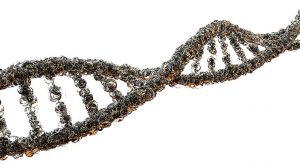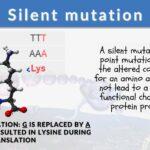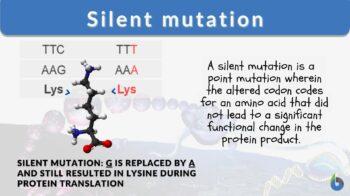
Silent mutation
n., plural: silent mutations
[ˈsaɪlənt mjuːˈteɪʃən]
Definition: a point mutation that causes no significant effect on the protein function
Table of Contents
A mutation is a change in the nucleotide sequence of a gene or a chromosome. When there is only one nucleotide involved, it is particularly referred to as a point mutation. Point mutation occurring in noncoding sequences often does not result in an altered amino acid sequence during translation.
However, if a mutation in the promoter sequence of a gene occurs, the effect may be apparent since the expression of the gene may cause changes in the amino acid sequence, as well as the structure and function of the protein product. Point mutations may be classified based on functionality: (1) nonsense mutations (2) missense mutations, and (3) silent mutations.
What is a silent mutation? What happens when a silent mutation happens? Read on to know more, especially about the definition of silent mutation in biology and examples.
Silent Mutation Definition
Silent mutations are mutations that arise when a single DNA nucleotide alteration inside a protein-coding region of a gene does not affect the amino acid sequence that makes up the gene’s protein. A mutation occurs when the DNA sequence of an organism changes.
What causes DNA mutations? Mutations can occur as a result of mistakes in DNA replication during cell division, mutagen exposure, or viral infection. When do mutations occur? Mutations can therefore arise during DNA replication if mistakes occur and are not addressed in a timely manner. Mutations can also develop as a result of environmental factors, such as smoking, sunshine, and radiation exposure.
Sometimes, mutations can cause numerous health issues. For example, tumor suppressor gene mutations may lead to cancer cells. A mutation of the adenomatous polyposis coli (APC) gene is associated with a variety of cancers, such as familial adenomatous polyposis (a type of colorectal cancer). In particular, a silent mutation in this gene has been found to affect the translation of an entire exon. (Montera et al., 2001)
Others may not affect the organism at all. There are other kinds of mutations, such as missense and nonsense mutations, when we talk about mutations involving only a single nucleotide mutation:
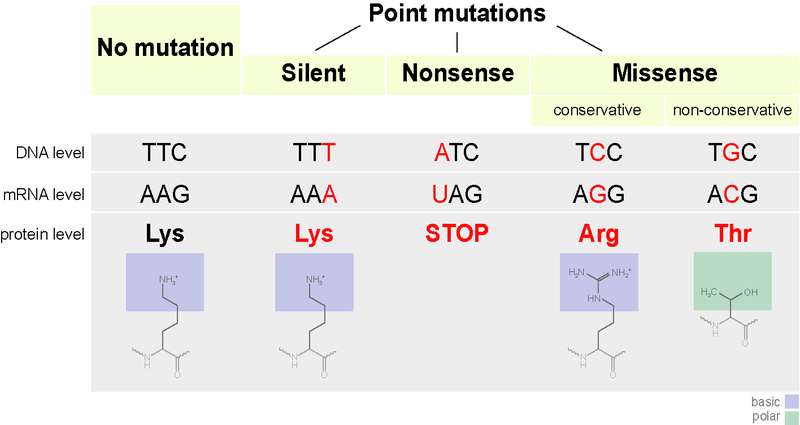
Or watch this vid about point mutations, including silent mutations:
A silent mutation (quiet mutation) is a form of mutation that does not cause a major change in the amino acid. As a result, the protein remains active and functional. Because of this, the changes are viewed as though they are neutral in terms of evolution. Silent mutations occur in non-coding regions or inside exons as opposed to synonymous mutations, which occur mostly within exons.
Compare: missense mutation; nonsense mutation
See also: point mutation; mutation, substitution mutation
Genetic Code
The genetic code converts nucleotide sequences in mRNA to amino acid sequences. This mechanism encodes genetic information utilizing groups of three nucleotides along the mRNA secondary structure known as codons.
With a few exceptions, the set of three nucleotides usually invariably produces the same amino acid, such as UGA, which normally serves as the stop codon (but can also encode tryptophan in mammalian mitochondria). The fact that most amino acids are specified by several codons shows that the genetic code is degenerate–different codons result in the same amino acid.
Synonyms are codons that code for the same amino acid. When the changed messenger RNA (mRNA) is translated, silent mutations result in no change in the amino acid or amino acid functionality. If the codon AAA is changed to AAG, the identical amino acid – lysine – is absorbed into the peptide chain.
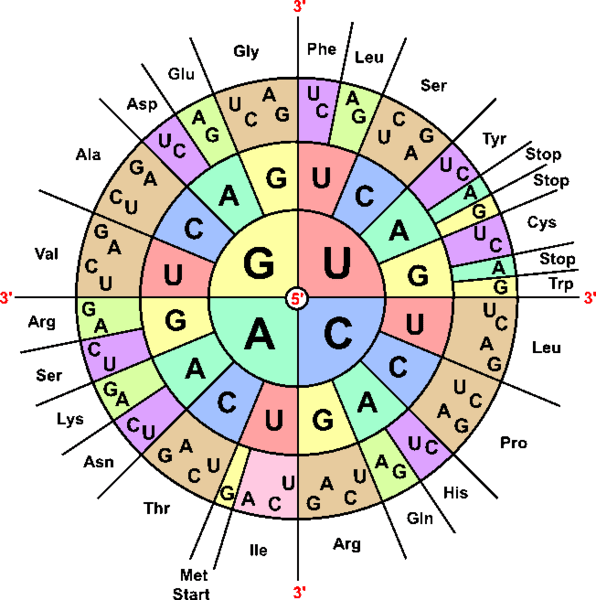
Structural Consequences
Primary structure
A nonsynonymous mutation that occurs at the genomic or transcriptional levels changes the amino acid sequence of the protein product. The main structure of a protein is its amino acid sequence. A replacement of one amino acid for another can degrade protein function and tertiary structure; however, depending on how closely the characteristics of the amino acids involved in the swap correspond, the consequences may be mild or acceptable.
A nonsense mutation, or the premature insertion of a stop codon, can change the fundamental structure of a protein. A shortened protein is generated in this scenario. Protein function and folding are affected by the location of the stop codon as well as the quantity and composition of the sequence lost.
Secondary structure
The secondary structure of mRNA is altered by silent mutations. Protein secondary structure is made up of interactions between the atoms of a polypeptide chain’s backbone, excluding the R-groups. The alpha-helix, which is a right-handed helix formed by hydrogen bonding between the nth and n+4th amino acid residues, is a frequent kind of secondary structure.
The beta-sheet is another typical form of secondary structure that has a right-handed twist, can be parallel or anti-parallel depending on the orientation of the bound polypeptides, and is made up of hydrogen bonds between the carbonyl and amino groups of two polypeptide chains.
Tertiary structure
Silent mutations have an impact on protein folding and function. A misfolded protein may usually be refolded with the aid of molecular chaperones. RNA often forms two common misfolded proteins by folding together and being trapped in distinct conformations, and it has difficulties selecting the preferred particular tertiary structure due to competing configurations.
RNA-binding proteins can help with RNA folding difficulties; however, when a silent mutation occurs in the mRNA chain, these chaperones are unable to connect to the molecule and steer the mRNA into the right shape.
According to a new study, silent mutations might influence protein structure and function. Protein folding time and rate can be changed, resulting in functional deficits.
Cause of Silent Mutation
Silent mutations, like all other mutations, can be induced by several mutagens – substances that cause changes in DNA sequence. Mutagens are classified into three types: biological, chemical, and physical.
- Biological mutagens – Mutations are induced by live creatures or life-sustaining mechanisms.
- Errors in DNA replication can modify the DNA sequence – for example, insertion of the incorrect nucleotide into the DNA sequence – and result in mutations, including silent mutations.
- Some viruses inject copies of their genetic material into the host DNA. This sort of large-scale alteration does not generally result in silent mutations.
- Transposons and Insertion Sequences – Some DNA fragments can self-relocate, or “jump” from one section of DNA to another. Again, this frequently leads to large-scale alterations rather than quiet mutations.
- Chemical Mutagens – A variety of substances react with DNA, chemically altering the nucleotides.
- Base Analogs – Chemicals that have a similar structure to nucleotide bases. These can be integrated into the mutated DNA sequence and produce base-pair mismatches, resulting in silent (and other) mutations.
- Alkylating Agents– Chemicals that react with nucleotide bases and alter them by adding different functional groups. This modifies the nucleotide base-pairing and the DNA sequence, resulting in silent (and other) mutations.
- Physical mutagens are high-energy radiation that physically changes or breaks the DNA strand.
- UV radiation produces thymine dimers, which interfere with DNA replication and generate additional mistakes. This does not frequently result in silent mutations.
- X-rays are a kind of high-energy radiation that may physically disrupt DNA strands and fracture the molecule. This causes far more issues than silent mutations.
Silent Mutation Examples
Here are examples that define silent mutations:
The Redundant Genome
DNA is read in three-nucleotide units called codons. Each codon defines an amino acid, with a few exceptions serving as stop and start signals. Different codons can sometimes designate the same amino acid. This redundancy of genetic code allows it to be more flexible. As a result, a quiet mutation almost often remains unreported.
The silent mutation is a real shift in DNA from thymine to cytosine. This mutation might have resulted from an error in DNA replication or from some type of repair that occurred after the DNA was damaged. Regardless, these three-nucleotide codons instruct the ribosome and its machinery to bind a lysine amino acid.
In this situation, regardless of the silent mutation, the whole structure of the protein will stay unchanged. The protein will operate identically with the same amino acid structure until it is exposed to a different environment. A silent point mutation can also occur at the protein level, with no functional effect on the protein.
Amino Acid Groups
All 21 amino acids can be called for by the four nucleotides in groups of three codons. The amino acids are organized below in Figure 3 according to their structure and side chains. These characteristics have a direct impact on how they interact with other amino acids and how they affect molecules in the environment.
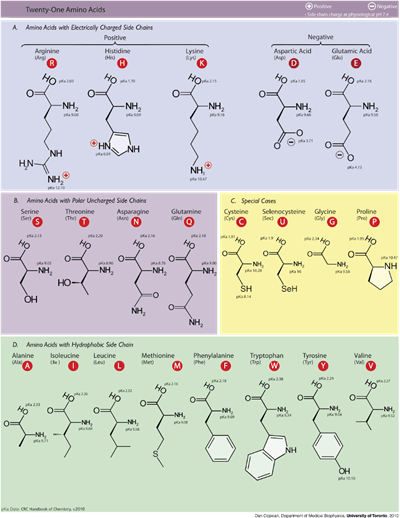
A silent mutation, which might easily involve more than one nucleotide, has the potential to modify a whole amino acid, or perhaps a sequence of amino acids. The effect of changing serine to a threonine may be minor.
The two amino acids belong to the same class and have extremely similar structures. This implies they will have a comparable chemical response to the molecules in their vicinity. This will affect the overall structure and impact of the protein. If the effect is insignificant, the alteration is referred to as a quiet mutation.
Place within Protein Structure
Several amino acids can be critical to a protein’s overall structure or functioning. Many proteins have an active site that other molecules must bind to. This site is made up of a particular amino acid sequence.
Certain amino acids and their side chains will have the exclusive capacity to interact with another molecule when folded correctly. If certain amino acids are mutated, the functioning of bonding may be severely hampered. This can alter a protein’s function or usefulness.
Other proteins on the interior of the molecule have complicated structures that must be present for certain activities to be performed. Many proteins go through a conformational shift, which is a shape alteration.
This is triggered by electrical stimulation or the binding of a chemical to the protein, such as a coenzyme or a substrate. The conformational shift, which changes the structure of the protein, can force molecules together or tear them apart.
Within Non-coding DNA
Many parts of the DNA are employed structurally, but their complete function is unknown. There are several examples of individuals with significantly different DNA yet seemingly the same traits.
These alterations, particularly minor structural changes in the DNA, are not important until they alter the interaction of the coding DNA with the environment. A silent mutation might easily occur in these locations without being noticed, but several mutations may begin to affect a population over time.
Bacteria, strangely, often have a single circle of DNA that contains all of the information they require. The human genome, on the other hand, is divided into several chromosomes that are bundled and maintained by specific proteins so that they may be coiled up during cell division.
One theory for how this much more sophisticated DNA came to be is that some quiet mutations began building DNA structures. More information can be stored in a more compact genome, which may have contributed to the evolution of life from single-celled creatures to more sophisticated forms.
Research and Clinical Applications
Silent mutations have been used in experiments and may have clinical effects.
Multi-Drug Resistance Gene 1
A silent mutation in the multidrug resistance gene 1 (MDR1), which genes for a cellular membrane pump that removes medicines from the cell, can impede translation at a specific place, allowing the peptide chain to bend into an unexpected shape. As a result, the mutant pump is less functional.
Because the nucleotide change does not modify the amino acid being translated, 99.8 percent of genes that suffer mutations are considered quiet. Although silent mutations are not believed to influence the phenotypic results, some mutations, such as the Multi-Drug Resistance Gene 1, demonstrate otherwise. MDR1 encodes the P-glycoprotein, which aids in drug elimination in the body.
It can be found in the intestines, the liver, the pancreas, and the brain. MDR 1 is found in the same sites as CYP3A4, an enzyme that aids in the removal of poisons or medications from the liver and intestines. Silent mutations, such as MDR 1, cause a shift in phenotypic response.
When mice did not have enough of the MDR 1 gene, their bodies did not detect the ivermectin or cyclosporine drugs, resulting in the production of toxins in their bodies.
MRD1 contains more than fifty single nucleotide polymorphisms (SNPs), or alterations in the nucleotide base sequence. In MDR1, the gene exon 26 (3535C) can mutate to 3535T, which transforms the transfer RNA into one that is not commonly observed, resulting in alterations in the outcome during translation. This is an illustration of how not all silent mutations are “quiet”.
The multi-drug resistance genes Exon 26 C3435T, Exon 21 G2677T/A, and Exon 12 C1236T have been examined for SNPs that occur at the same time, changing the phenotypic “function”. This shows a haplotype dependence between exon 26 and other polymorphic exons. For example, efavirenz and nelfinavir are two medications that can help reduce HIV infection in the body. When the SNP from exon 26 is combined with additional SNP exons, the medicines’ ability to sustain HIV infection is reduced.
Although the patient has a decreased quantity of the virus when the TT nucleotides in exon 26 are produced, the infection can spread normally when the genotype morphs into CC or CT, leaving the MDR 1 gene practically defenseless. These variations in the bases of MDR 1 exon 26 reveal a link between MDR 1 gene mutations and the effectiveness of antiretroviral medicines to reduce HIV infection.
Vaccination for polio
Steffen Mueller of Stony Brook University created a live vaccination for polio in which the virus was modified to replace naturally occurring codons in the genome with synonymous mutation codons. As a result, the virus could still infect and proliferate, but at a slower rate. Mice injected with this vaccine developed resistance to the wild polio strain.
Molecular cloning
Silent mutations introduced into a gene of interest can be beneficial in molecular cloning operations to establish or delete recognition sites for restriction enzymes.
Effect on dopamine receptor D2 gene activity
Silent mutations can induce mental problems. One silent mutation causes the dopamine receptor D2 gene to be less stable and degrade quicker, resulting in the gene being underexpressed.
Pain sensitivity
Both an ATG to GTG mutation (nonsynonymous) and a CAT to CAC mutation produce deviations from typical pain sensitivity (synonymous). Both the low pain sensitivity and high pain sensitivity genes have these two mutations. Low pain sensitivity has an extra CTC to CTG silent mutation, but high pain sensitivity does not and shares the CTC sequence with average pain sensitivity at this site.
Frequently Asked Questions
How frequently do silent mutations occur?
Because the nucleotide change does not modify the amino acid being translated, 99.8 percent of genes that suffer mutations are considered quiet.
How do you identify a silent mutation?
The two amino acids belong to the same class and have extremely similar structures. This implies they will have a comparable chemical response to the molecules in their vicinity. This will affect the overall structure and impact of the protein. It could be a truncated protein or elongated protein. If the effect is insignificant, the alteration is referred to as a silent mutation.
Where are silent mutations more likely to happen?
A silent mutation of a DNA sequence is more likely to occur when a change in the DNA sequence inside a protein-coding region of a gene has no effect on the amino acid sequence that makes up the protein. This alteration often occurs at the codon’s third position, commonly known as the wobble location.
Mutated codons code for what in silent mutations?
Silent mutations cause a change in one of the letters in the triplet code that encodes a codon, but the amino acid that is coded for stays identical or biochemical characteristics that are comparable despite the single base change. A silent mutation is neutral if it codes for a protein that is still functional.
How does point mutation affect the protein?
A point mutation can have one of three effects on protein:
- A change to a different amino acid, known as a missense mutation;
- A termination codon that is changed, known as a nonsense mutation; or
- The creation of a new sequence that is silent in terms of protein sequence but changes some aspects of gene function, such as RNA altered splicing or transcriptional expression levels. Thus, silent mutations may affect splicing or transcriptional control.
Is sickle cell anemia caused by a point mutation? Is sickle cell anemia caused by silent mutation?
A point mutation is the cause of sickle cell anemia. A single nucleotide mutation in the HBB gene leads to the replacement of glutamic acid with valine and this results in the synthesis of altered hemoglobin protein that make the red blood cell acquire a sickle shape. Thus, sickle cell anemia is not a silent mutation but a missense mutation.
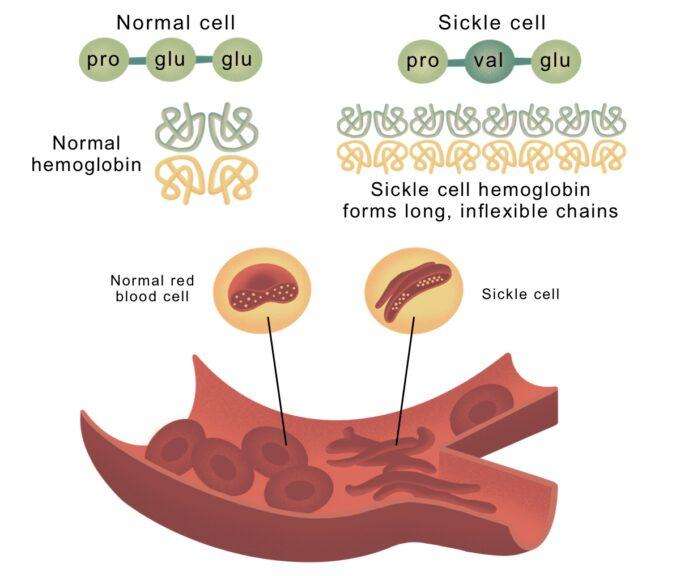
Answer the quiz below to check what you have learned so far about silent mutations.
Further Reading
References
- Ask a Geneticist. (n.d.). The Tech Interactive. Retrieved June 18, 2022, from https://www.thetech.org/ask-a-geneticist
- DNA Mutations | Biology for Majors I. (n.d.). Retrieved June 18, 2022, from https://courses.lumenlearning.com/suny-wmopen-biology1/chapter/dna-mutations/
- Kimchi-Sarfaty, C., Oh, J., Kim, I.-W., Sauna, Z., Calcagno, A., Ambudkar, S., & Gottesman, M. (2007). A “Silent” Polymorphism in the MDR1 Gene Changes Substrate Specificity. Science. https://doi.org/10.1126/SCIENCE.1135308
- Montera, M. (2001). A silent mutation in exon 14 of the APC gene is associated with exon skipping in a FAP family. Journal of Medical Genetics, 38(12), 863–867. https://doi.org/10.1136/jmg.38.12.863
- Mutation. (n.d.). Genome.Gov. Retrieved June 18, 2022, from https://www.genome.gov/genetics-glossary/Mutation
- Point Mutation—An overview | ScienceDirect Topics. (n.d.). Retrieved June 18, 2022, from https://www.sciencedirect.com/topics/medicine-and-dentistry/point-mutation
- Silent Mutation | Examples & Causes—Video & Lesson Transcript. (n.d.). Study.Com. Retrieved June 18, 2022, from https://study.com/learn/lesson/silent-mutation-examples-causes.html
- The Sound of a Silent Mutation. (n.d.-a). Retrieved June 18, 2022, from https://www.science.org/content/article/sound-silent-mutation
- The Sound of a Silent Mutation. (n.d.-b). Retrieved June 18, 2022, from https://www.science.org/content/article/sound-silent-mutation
©BiologyOnline.com. Content provided and moderated by Biology Online Editors.

